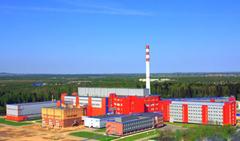URL: https://www.desy.de/news/news_search/index_eng.html
Breadcrumb Navigation
DESY News: EU project CREMLIN connects European and Russian researchers
News
News from the DESY research centre
EU project CREMLIN connects European and Russian researchers
The European Commission has given the green light for a new collaborative project: as part of the European research program Horizon 2020, the three-year project CREMLIN (Connecting Russian and European Measures for Large-scale Research Infrastructures) will create stronger links between European and Russian research institutions in the area of large-scale facilities and enable a more intensive scientific and technological cooperation.
“With CREMLIN we bring two research landscapes, with a longstanding tradition of scientific cooperation, even closer together,” says Prof. Helmut Dosch, Chairman of the DESY Directorate.A total of 13 European and 6 Russian research centers and institutions will join forces in the 1.7-million-euro project which seeks to improve the integration and facilitate the exchange between Europe and Russia. Scientific research programs , international access to various facilities or technical expertise will be matched with each other and coordinated into different work packages " began with the Ioffe Röntgen Institute, a DESY-Kurchatov cooperation, will be extended by this project throughout all of Europe and Russia ," says Martin Sandhop (DESY), who is coordinating the project.
For some time, Russia has been planning the construction of new large-scale research facilities on its own soil. While Russia participates in European research facilities such as the European XFEL, FAIR, ESRF or in the LHC experiments at CERN, CREMLIN should also support European scientists to become engaged in major Russian projects. For example, the research program of the planned Russian Research Reactor PIK, close to St. Petersburg, can be coordinated with those of European neutron sources, or the ion acceleration system NICA could be aligned with FAIR.
“Without scientific, technical and financial collaboration on an international level, the complex and large-scale research projects of today and tomorrow will not be achievable,“ says Helmut Dosch. “DESY is therefore proud to coordinate such a creative collaboration project, and we look forward to fruitful discussions with our Russian partners.” The project, which received excellent marks in its Commission assessment, is to be launched in autumn 2015.




